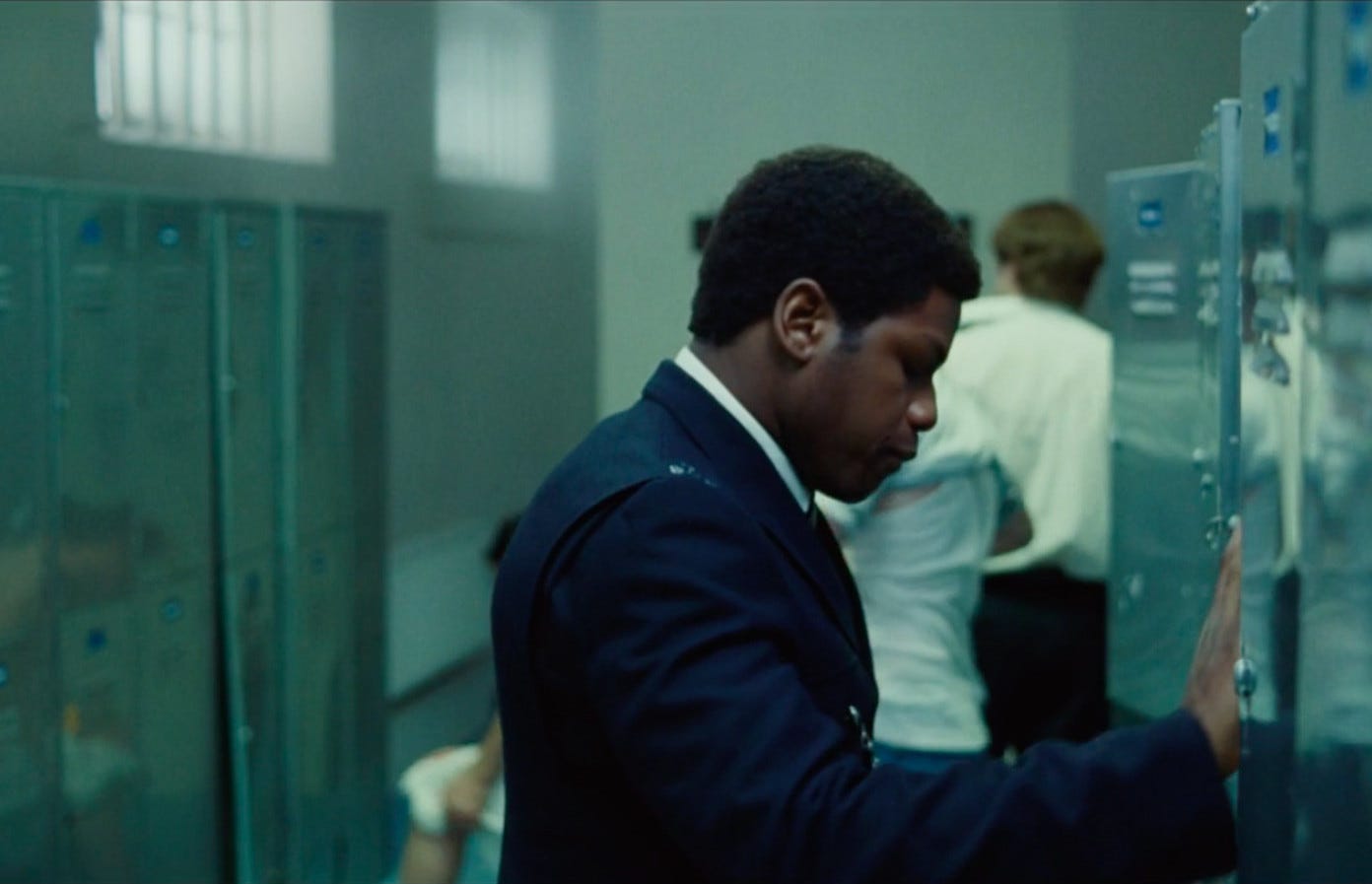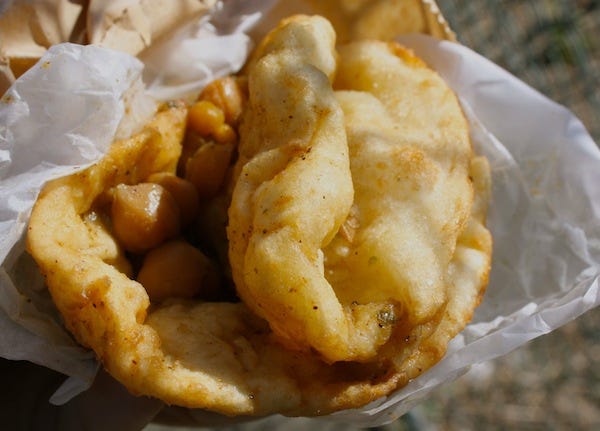Small Axe and Caribbean cuisine
The celebration of Black lives extends to food in this new anthology film.
SMALL AXE
A collection of five films by Steve McQueen
In Lovers Rock, a dance party is not a set piece; it is everything. In most movies, the party scene owes a debt to the lead up: the characters’ dutiful (and sometimes foiled) preparations, their groaning expectations of a budding romance. This concise yet unhurried movie compacts the whole ordeal into a trim 68 minutes. It forges a portrait of Black life and love through quotidian experience — an 80s house/blues party — and not through suffering and violence. It’s the opposite of a movie like Antebellum.
McQueen teases us with a festive triumvirate of bass, sweat, and fears extinguished by the riddims of a dimly lit room, where hips and shoulders groove deeper towards being invincible. The movie also revives the joys of communal signing, an activity quashed everywhere but the church. Indeed, the revelers’ sultry rendition of Janet Kay’s “Silly Games” stripped of instrumentation is a border-line religious experience. Now streaming on Amazon Prime.
Lovers Rock is the second episode of Steve McQueen’s Small Axe anthology, which depicts real and fictional stories of the West Indian diaspora in London from decades past. The first installment Mangrove is less solid. At its best a clear picture of how lives are cleaved and upheaved by racism; at its worst a rote, if well executed, courtroom drama indistinguishable from an episode of today’s television (which McQueen says these movies are not). Based on the Mangrove 9, a group of Black Londoners on trial for the right to protest, it might’ve shined as a miniseries of its own with 45 minutes devoted to each defendant.
More nuanced in its depiction of police brutality is Red, White and Blue, an affecting chamber piece starring John Boyega. He plays a young research scientist who quits his day job to join the force, the Metropolis Police, hoping to spark internal reform. He encounters a tough reality — hostile workplace and parental objection — rendering this a portrait of individual resilience in the the pursuit of public reform (an inversion of Mangrove’s strength in numbers).
Small Axe’s celebration of Black lives extends into the realm of food.
In Red, White and Blue, a family meal is a symbolic gesture of solidarity. Boyega’s character’s kindred share a last dinner, in spite of clashing convictions about his career choices. To be clear, the dinner isn’t a cure-all where homemade comforts smooth over arguments with their delectability; it suggests demonstrative unity, the significance of showing up and being there in spite of differences.
In Mangrove, the food features less as delicious sustenance than as a metonym for cultural connection. Frank Crichlow, the proprietor of Mangrove Restaurant, an oasis in an unwelcoming city, serves Caribbean food unmodulated for outsiders in the (then) posh Nottinghill neighborhood. But he also provides a physical space for immigrants, radicals, other members of the community to call their own, and salutes heritage and motherland, sending customers and their tastebuds nostalgic reassurance.
Food is not only something we consume for survival – it is an essential extension of ourselves, a mark of our identity and a representation of our culture.”
It may seem uninspired to use a movie that centers on a Caribbean immigrants as an opportunity to talk about their food. However, Caribbean cuisine and its origins still aren’t very well known. In her essay for Vittles, chef Keshia Sakarah, quoted above, delves into the diversity of Island cuisines, which resulted in part from colonial influence on West African culinary traditions.
EAT/MAKE
Trinidadian doubles
Every bread is always described as a pillow — Neapolitan pizza, dumpling shells, sourdough entrails — as if the sack that cradles your head as you sleep were the highest, most admirable achievement. Well in my estimation the most downy and luxe amalgamation of flour plus water is bara. The small round breads are pocketed and puffy-soft, yielding effortlessly to tongue and teeth, and counterintuitively deep fried. In doubles, they house channa, curied chickpeas, doused with tamarind and pepper sauce (Scotch bonnet) if you have any self-respect. I proselytize this haphazard sandwich whenever I can and always make the mistake of ordering just one pair at A&A Bake Doubles and Roti where two bara are overlaid like a Venn Diagram, wrapped in paper foil, and consequently subjected to a micro-steam, lending just the right amount of sponginess sans gooey repercussions.
As it happens, making doubles is a pinch. I had more trouble recreating the the filling than I did the bread, by far the most low-maintenance carbstuff I’ve ever made — it literally (really) took 30 seconds to fry.
Recipe: Chickpea Doubles with Tamarind and Scotch Bonnet Pepper Sauce from Food & Wine
Unexpectedly, Lovers Rock also features food. Before festivities begin, enterprising women preside over the kitchin, chopping vegetables and simmering curry, salable provisions for the evening’s guests. Eating at the club is strange illogical proposition but probably not an uncommon one (the Meatpacking district: sushi and bottle service galore). In the movie, dinner with dancing is decidedly different, evoking a extra measure of communal warmth. (It’s a house party after all as many Black people were unwelcome at actual clubs.) You may not actually glimpse the characters chowing down, but you can envision the atmosphere: the feeling of just a few friends (or many) hanging out at home on a Saturday night with some late-night snacks. Eating like dancing can be a shared pleasure that doesn’t require words.
I imagine gawking and preening trumps dancing and eating as the main purpose at the aforementioned club-restaurants. Is the food any good? The closest I’ve landed at such a place was Louie & Chan on Broome Street. DJs holed up in the basement while one level up you could split a decent pasta and spritz in the velvety dining room.
Baby’s All Right, the club/venue underneath the JMZ tracks in Williamsburg, had Kichin, a connected bar/restaurant with the best Korean chicken wings, better than Bonchon, better than Pelicana. They also turned me on to the vegetarian version — still haven’t found another fried cauliflower whose slopes and crags aren’t bogged down by batter and sauce. I wasn’t the only fan. Kichin ventured into a brick-and-mortardom not too long ago, but like many NYC restaurants, it seems to have halted operations during the pandemic.
Extras:
Behind the music of Lovers Rock (lovers rock), NYT
Talking Tampopo on The Criterion Project with my multi-hyphenate friend Conrado
Up next: Hillbilly Elegy and then 2020 odds and ends (lists!!)








